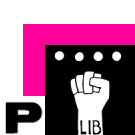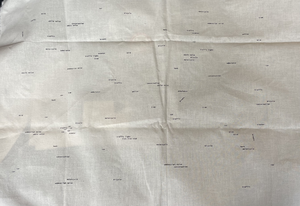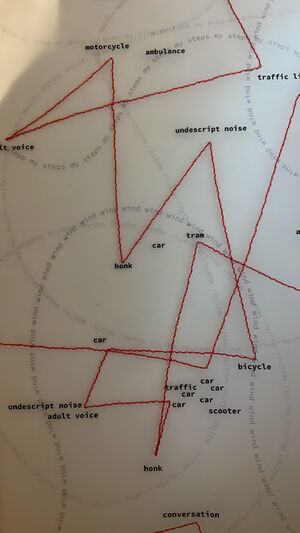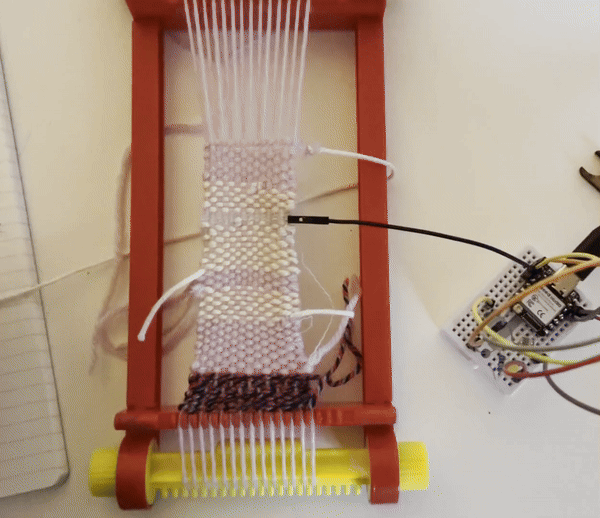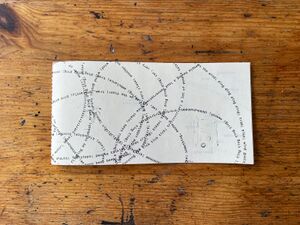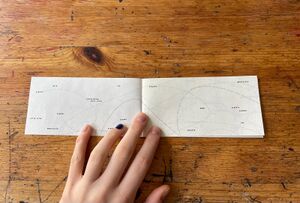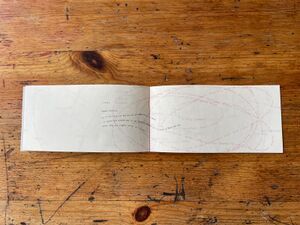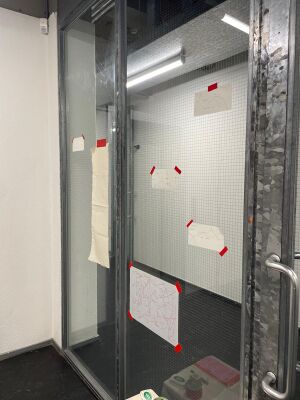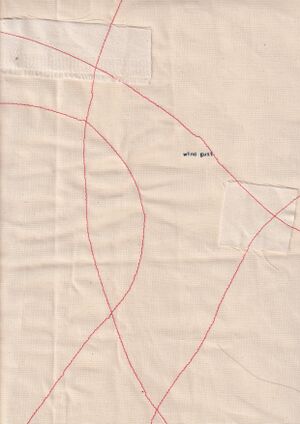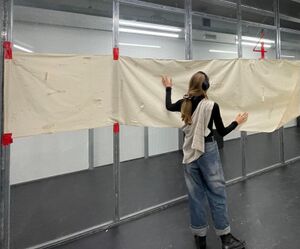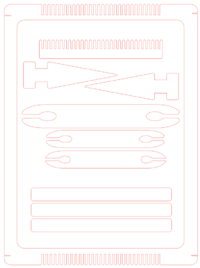User:Anita!/more things: Difference between revisions
No edit summary |
|||
| (20 intermediate revisions by the same user not shown) | |||
| Line 4: | Line 4: | ||
color: blue; | color: blue; | ||
"> | "> | ||
For now this is a page for the second year | |||
==Continuing the city soundscape== | ==Continuing the city soundscape== | ||
| Line 25: | Line 23: | ||
I also like the idea of somehow also connecting the original audio files, but I am not sure yet of how and if i will do that. Maybe its nice to also just try to imagine the spacing between these sounds, the length of the walks, how close of far they feel, not hearing the sounds, but imagining what we remember they sound like. But lets see | I also like the idea of somehow also connecting the original audio files, but I am not sure yet of how and if i will do that. Maybe its nice to also just try to imagine the spacing between these sounds, the length of the walks, how close of far they feel, not hearing the sounds, but imagining what we remember they sound like. But lets see | ||
==Thinking about research== | |||
I want to continue working with sound in the context of public space, that I already know, but how? Listening is something I focused on a lot during the last Special Issue, and it is a topic that I know i want to experiment with more. While listening in the past, I have tried to focus on different aspects of it, for example, listening in a nominal way (yes sound, no sound), which forces you to focus on observing the rhythm of sound. | |||
I also know that I want to incorporate some form of garment construction technique into the final project, but that relates more to the end representation project than the research itself. | |||
==PMMoMs== | |||
“Sound is pervasive, it spreads out in a space, connecting all bodies that it encounters. It is not an object or an attribute of an object but is generated by the reciprocal relationship between context object and subjects.” Elena Biserna in Going out | |||
===What?=== | |||
A large scale textile soundboard (made as an interactive textile), containing a series of noises collected from public spaces. The soundboard can be played to create different city noise soundscapes, inviting the person playing with it to listen, move and imagine a path. Different points produce different sounds caught in the city. The person playing has to move and 'perform' because of the distance between the push sensors playing the sounds, enhancing the physicality aspect and physically embodying the soundscape. | |||
===Why? === | |||
Sound connects. It is not physical but exists so powerfully in space. It identifies places but is not usually thought of or used to describe one, other than the simple ‘noisy’ or ‘silent’. Imagining and playing with mundane sounds, exploring the landscape with no visual aid, to notice and create new imaginary paths. | |||
===Workflow=== | |||
Select and record single sounds from most Rotterdam squares. At least 10 sounds, from thoughout the day. | |||
Record and pick the sounds to be used | |||
Design a soundboard | |||
Program the microcontroller | |||
Sew the circuit for it and connect | |||
Test and play by myself | |||
Adapt based on tests | |||
Test and play with public | |||
Adapt based on tests | |||
Readyyyyy | |||
===Timetable=== | |||
October - recording and listening, early prototyping (drawing circuits, read more on interactive textiles) | |||
November - recording and listening, learn more about interactive textiles, do smaller projects involving them | |||
December - recording and listening, experiment with circuit connections, sewing circuits | |||
January - recording and listening, start testing on a smaller scale | |||
===Relation to previous practice (two sentences, draw on Text on Practice)=== | |||
Listening, sewing, list making, noticing, moving and playing in public space. | |||
===Plan!=== | |||
??? | |||
two different plans, that will enhance each other and inform each other. for research in book and research in public space. i would like the structure of the thesis to be kind of like a conversation between these two sides, kind of like sounds talking to each other. | |||
==Interactive textiles== | |||
Ways to make a textile interactive: | |||
- conductive ink screenprint (the area with ink could be connected to push or touch sensor) | |||
- metal fibers woven into fabric (possibility of spinning my own yarn to knit with for the soundboard) | |||
- optic fibers (according to https://textileinnovations.wordpress.com/research-focus-2/, "– transmit data signals, transmit light for optical sensing, detect deformations in fabrics due to stress and strain and perform chemical sensing.") | |||
I still have to do extensive research on this, to properly select the best tool for me. It could be interesting to weave using re purposed optic fiber, to include pieces of the public infrastructure of the city into the piece itself but might be unrealistic as a thought. | |||
Silkscreen printing would probably be the easiest option, but my least favorite one at this moment in time. The metal and conductive properties of the circuit soundboard being an actual part of the fabric, how it is constructed and flows seems much more organic and genuine to me, so even though it might potentially be more time consuming, I would prefer either weaving or knitting the circuit. | |||
Plan: | |||
research the interactive fabric construction | |||
talk to people at fabric and interaction station | |||
weave a small patch and connect it with microcontroller and push sensors | |||
==Gathering more info== | |||
I went to intarsia knitting and metal station skills. From the knitting, i was able to ask more about the machines available, if i can use conductive material with the machines and also more info around the technique of intarsia, which would allow me to knit in patterns without having to have dragging threads in the back, preventing short circuit (and much less expensive). I am still unsure about what construction method i am going to use, between knitting, weaving and tufting. They all have their advantages and disadvantages, so I think I will make samples with all three and then decide. | |||
I was also looking into the possibility of maybe making my own conductive thread. Since the 'best' kind is made out of steel or stainless steel alloy, I am curious wether i could spin the conductive wool using the thread in combination with natural fibers instead of buying readymade conductive yarn. | |||
I took some steps to try and do this, testing spinning with wool and yarn. It is something I had not done before and is something that takes a lot of technique to do evenly, but I have been practicing a bit. | |||
There are many different kinds of composition for conductive thread, but many of them oxidize and lose their resistance over time, so for ensuring function in the long run, stainless steel seems the best option according to what i have found | |||
==making a touch sensorrrr== | |||
I have now woven a small sample, with different percentages of conductive yarn wixed with 100% wool yarn to play with resistance and conductivity. | |||
[[File:Pressure sensor.gif]] | |||
The first patch is one strand of wool spun with two conductive yarns, the second patch is 100% conductive yarn, the third is one is one strand of wool spun with one conductive yarn strand, the last is also one to one, but not spun, just woven next to each other. I noticed that all four of them worked regardless to turn on the light when the sensitivity of the code was adjusted. | |||
This is the code I used (and modified to adapt to the sensitivity of the weave) | |||
/* | |||
made 13 Oct 2024 | |||
by Michelle Vossen | |||
This example code is in the public domain. | |||
https://www.arduino.cc/en/Tutorial/BuiltInExamples/Blink | |||
*/ | |||
int LED_pin = A0; | |||
int touch_pin = T2; | |||
int threshold = 60000; | |||
int touchValue; | |||
void setup() { | |||
Serial.begin(115200); | |||
pinMode(LED_pin, OUTPUT); | |||
} | |||
void loop() { | |||
touchValue = touchRead(touch_pin); | |||
Serial.println(touchValue); | |||
if (touchValue > threshold) { | |||
// turn LED on | |||
digitalWrite(LED_pin, HIGH); | |||
Serial.println("LED on"); | |||
} else { | |||
// turn LED off | |||
digitalWrite(LED_pin, LOW); | |||
Serial.println("LED off"); | |||
} | |||
delay(50); | |||
// while (touch_pin == 1) { | |||
// digitalWrite(LED_pin, HIGH); | |||
// } | |||
// while (touch_pin == 0) { | |||
// digitalWrite(LED_pin, LOW); | |||
// } | |||
} | |||
==public moment== | |||
For the public moment, I set up in the lift fish bowl. I chose this room because of its odd acoustic qualities. I invited people in, gave some context about the project, and showed some other paper work connected to the topic too. | |||
I had a little zine with some abstract maps of sound in Rotterdam that I collected in the spring and summer. | |||
{|style="margin: 0 auto;" | |||
|[[File:Zine cover.jpg|thumb|zine cover]] | |||
|[[File:Zine spread.jpg|thumb|One of the spreads]] | |||
|[[File:Zine middle page.jpg|thumb|Zine middle page]] | |||
|} | |||
I taped outcomes of listening exercises I had previously done on the walls, as well as samples of textiles to create a more intimate feeling. | |||
{|style="margin: 0 auto;" | |||
|[[File:Wall public moment.jpg|thumb|Wall public moment]] | |||
|} | |||
These two parts were important to give some more context to the textile installation. | |||
The main part of what I showed was large textile where I screen printed words corresponding to sounds I listened while sitting on Blaak. There were also some sewn 'indications' and patches to create texture, guide the person playing and 'hide' some sounds. | |||
{|style="margin: 0 auto;" | |||
|[[File:Fabric.jpg|thumb|a small part of fabric scan]] | |||
|} | |||
I explained why I am researching this, and why I want to listen and invite people to listen to the urban soundscape, stressed how subjective and unique it is every time you listen, even though it might seem the same at first. I then asked them to interact with the fabric, and compose their own city soundscape in their minds. I also provided some noise cancelling headphones to be able to focus on the memories of sound even more, and 'picture' them in an easier way. I also invited everyone to really touch and move the textile while performing. | |||
After they played, I asked for some feedback and had many interesting conversations with visitors. | |||
{|style="margin: 0 auto;" | |||
|[[File:Interaction with fabric.jpg|thumb|Interaction with fabric]] | |||
|} | |||
==Thinking about tools== | |||
[[File:Adapted loom file.png|thumb|200 px|right|adapted loom]] | |||
To prototype quickly and be able to have a lot of time to test and try things out, I want to make a little lasercutted hand loom and a simple e-spinner (spinning wheel for yarn that does not require a pedal operation and just moves by itself). This seems very realistic since i have found extensive documentation on people diying their own, like [https://www.youtube.com/watch?v=bk0ii7SaotU&ab_channel=BernadetteSky this] or [https://drive.google.com/drive/folders/1oEYZAqawKRZlMYUjxeVT0tagNJpav7qo this] crazy project from HILO, a Berlin based textile innovation design studio that works with open source tools for small scale productions. | |||
For the loom, I also have already found a template [https://www.instructables.com/Laser-Cut-Mini-Frame-Loom-Weaving/ here] which I have adapted to the scale and needs of my project which I will print next week. | |||
Using these tools will allow me to work outside of the fabric station, which means being able to prototype in the weekend as well as let me know more about the construction of machines I am going to use on a semi-daily basis. | |||
==Resources!== | |||
[https://wwww.com/How-to-make-conductive-thread/ Make your own conductive thread] | |||
[https://blog.sparkfuneducation.com/5-crafty-ways-to-make-diy-sewable-electronic-sensors Soft circuits] | |||
[https://www.kobakant.at/DIY/?p=7722 Conductive textile survival guide] | |||
[https://yuchenz.medium.com/tufting-with-conductive-thread-6ea197c3b54c Tufting with conductive thread] | |||
[https://adacad.org open-source design tool that applies the logics of parametric design to woven drafting]] | |||
[https://unstable.design/prototyping-smart-textiles/_book/ huge library of information around experimental textiles] | |||
[https://class.textile-academy.org/2022/capucine-robert/assignments/week10/ BUild ur own Spinning machineee] | |||
Latest revision as of 15:03, 15 November 2024
For now this is a page for the second year
Continuing the city soundscape
In the end, I ended up with a lot of recordings of solo walks and cycles. What to do with them? I listened to all of them, annotating what sounds I would hear.
These are two examples of the soundscape.
First, I tried on transparency paper, i liked the idea of attempting to create a small sewn zine with overlapping maps, but thinking back, after trying it, i ended up screenprinting this on cotton fabric, as it would allow for me to really use the material to my advantage, placing all the wondering walks and cycles on one singular map, instead of one route per map if that makes sense.
Now I will begin sewing the connections between the sounds, creating many layers.
I also like the idea of somehow also connecting the original audio files, but I am not sure yet of how and if i will do that. Maybe its nice to also just try to imagine the spacing between these sounds, the length of the walks, how close of far they feel, not hearing the sounds, but imagining what we remember they sound like. But lets see
Thinking about research
I want to continue working with sound in the context of public space, that I already know, but how? Listening is something I focused on a lot during the last Special Issue, and it is a topic that I know i want to experiment with more. While listening in the past, I have tried to focus on different aspects of it, for example, listening in a nominal way (yes sound, no sound), which forces you to focus on observing the rhythm of sound.
I also know that I want to incorporate some form of garment construction technique into the final project, but that relates more to the end representation project than the research itself.
PMMoMs
“Sound is pervasive, it spreads out in a space, connecting all bodies that it encounters. It is not an object or an attribute of an object but is generated by the reciprocal relationship between context object and subjects.” Elena Biserna in Going out
What?
A large scale textile soundboard (made as an interactive textile), containing a series of noises collected from public spaces. The soundboard can be played to create different city noise soundscapes, inviting the person playing with it to listen, move and imagine a path. Different points produce different sounds caught in the city. The person playing has to move and 'perform' because of the distance between the push sensors playing the sounds, enhancing the physicality aspect and physically embodying the soundscape.
Why?
Sound connects. It is not physical but exists so powerfully in space. It identifies places but is not usually thought of or used to describe one, other than the simple ‘noisy’ or ‘silent’. Imagining and playing with mundane sounds, exploring the landscape with no visual aid, to notice and create new imaginary paths.
Workflow
Select and record single sounds from most Rotterdam squares. At least 10 sounds, from thoughout the day. Record and pick the sounds to be used Design a soundboard Program the microcontroller Sew the circuit for it and connect Test and play by myself Adapt based on tests Test and play with public Adapt based on tests Readyyyyy
Timetable
October - recording and listening, early prototyping (drawing circuits, read more on interactive textiles) November - recording and listening, learn more about interactive textiles, do smaller projects involving them December - recording and listening, experiment with circuit connections, sewing circuits January - recording and listening, start testing on a smaller scale
Relation to previous practice (two sentences, draw on Text on Practice)
Listening, sewing, list making, noticing, moving and playing in public space.
Plan!
???
two different plans, that will enhance each other and inform each other. for research in book and research in public space. i would like the structure of the thesis to be kind of like a conversation between these two sides, kind of like sounds talking to each other.
Interactive textiles
Ways to make a textile interactive: - conductive ink screenprint (the area with ink could be connected to push or touch sensor) - metal fibers woven into fabric (possibility of spinning my own yarn to knit with for the soundboard) - optic fibers (according to https://textileinnovations.wordpress.com/research-focus-2/, "– transmit data signals, transmit light for optical sensing, detect deformations in fabrics due to stress and strain and perform chemical sensing.")
I still have to do extensive research on this, to properly select the best tool for me. It could be interesting to weave using re purposed optic fiber, to include pieces of the public infrastructure of the city into the piece itself but might be unrealistic as a thought.
Silkscreen printing would probably be the easiest option, but my least favorite one at this moment in time. The metal and conductive properties of the circuit soundboard being an actual part of the fabric, how it is constructed and flows seems much more organic and genuine to me, so even though it might potentially be more time consuming, I would prefer either weaving or knitting the circuit.
Plan:
research the interactive fabric construction talk to people at fabric and interaction station weave a small patch and connect it with microcontroller and push sensors
Gathering more info
I went to intarsia knitting and metal station skills. From the knitting, i was able to ask more about the machines available, if i can use conductive material with the machines and also more info around the technique of intarsia, which would allow me to knit in patterns without having to have dragging threads in the back, preventing short circuit (and much less expensive). I am still unsure about what construction method i am going to use, between knitting, weaving and tufting. They all have their advantages and disadvantages, so I think I will make samples with all three and then decide.
I was also looking into the possibility of maybe making my own conductive thread. Since the 'best' kind is made out of steel or stainless steel alloy, I am curious wether i could spin the conductive wool using the thread in combination with natural fibers instead of buying readymade conductive yarn.
I took some steps to try and do this, testing spinning with wool and yarn. It is something I had not done before and is something that takes a lot of technique to do evenly, but I have been practicing a bit.
There are many different kinds of composition for conductive thread, but many of them oxidize and lose their resistance over time, so for ensuring function in the long run, stainless steel seems the best option according to what i have found
making a touch sensorrrr
I have now woven a small sample, with different percentages of conductive yarn wixed with 100% wool yarn to play with resistance and conductivity.
The first patch is one strand of wool spun with two conductive yarns, the second patch is 100% conductive yarn, the third is one is one strand of wool spun with one conductive yarn strand, the last is also one to one, but not spun, just woven next to each other. I noticed that all four of them worked regardless to turn on the light when the sensitivity of the code was adjusted.
This is the code I used (and modified to adapt to the sensitivity of the weave)
/*
made 13 Oct 2024 by Michelle Vossen
This example code is in the public domain.
https://www.arduino.cc/en/Tutorial/BuiltInExamples/Blink */
int LED_pin = A0; int touch_pin = T2;
int threshold = 60000; int touchValue;
void setup() {
Serial.begin(115200);
pinMode(LED_pin, OUTPUT);
}
void loop() {
touchValue = touchRead(touch_pin);
Serial.println(touchValue);
if (touchValue > threshold) {
// turn LED on
digitalWrite(LED_pin, HIGH);
Serial.println("LED on");
} else {
// turn LED off
digitalWrite(LED_pin, LOW);
Serial.println("LED off");
}
delay(50);
// while (touch_pin == 1) {
// digitalWrite(LED_pin, HIGH);
// }
// while (touch_pin == 0) {
// digitalWrite(LED_pin, LOW);
// }
}
public moment
For the public moment, I set up in the lift fish bowl. I chose this room because of its odd acoustic qualities. I invited people in, gave some context about the project, and showed some other paper work connected to the topic too.
I had a little zine with some abstract maps of sound in Rotterdam that I collected in the spring and summer.
I taped outcomes of listening exercises I had previously done on the walls, as well as samples of textiles to create a more intimate feeling.
These two parts were important to give some more context to the textile installation. The main part of what I showed was large textile where I screen printed words corresponding to sounds I listened while sitting on Blaak. There were also some sewn 'indications' and patches to create texture, guide the person playing and 'hide' some sounds.
I explained why I am researching this, and why I want to listen and invite people to listen to the urban soundscape, stressed how subjective and unique it is every time you listen, even though it might seem the same at first. I then asked them to interact with the fabric, and compose their own city soundscape in their minds. I also provided some noise cancelling headphones to be able to focus on the memories of sound even more, and 'picture' them in an easier way. I also invited everyone to really touch and move the textile while performing.
After they played, I asked for some feedback and had many interesting conversations with visitors.
Thinking about tools
To prototype quickly and be able to have a lot of time to test and try things out, I want to make a little lasercutted hand loom and a simple e-spinner (spinning wheel for yarn that does not require a pedal operation and just moves by itself). This seems very realistic since i have found extensive documentation on people diying their own, like this or this crazy project from HILO, a Berlin based textile innovation design studio that works with open source tools for small scale productions.
For the loom, I also have already found a template here which I have adapted to the scale and needs of my project which I will print next week.
Using these tools will allow me to work outside of the fabric station, which means being able to prototype in the weekend as well as let me know more about the construction of machines I am going to use on a semi-daily basis.
Resources!
Make your own conductive thread
Conductive textile survival guide
Tufting with conductive thread
open-source design tool that applies the logics of parametric design to woven drafting]
